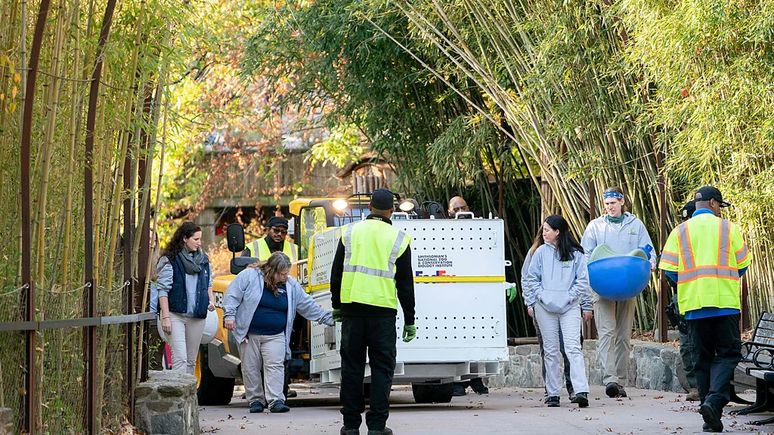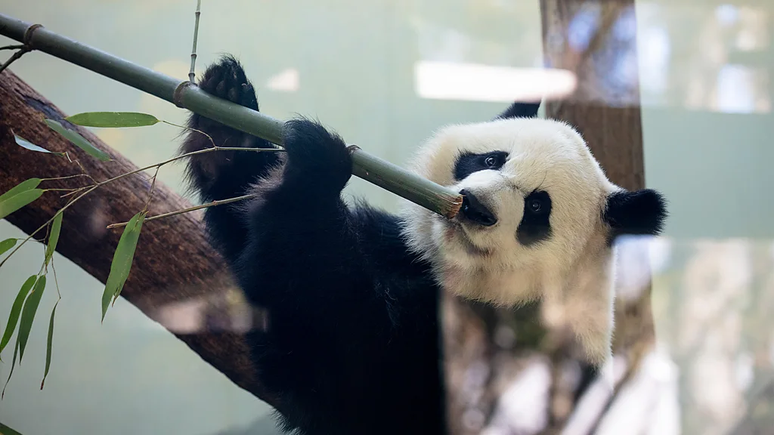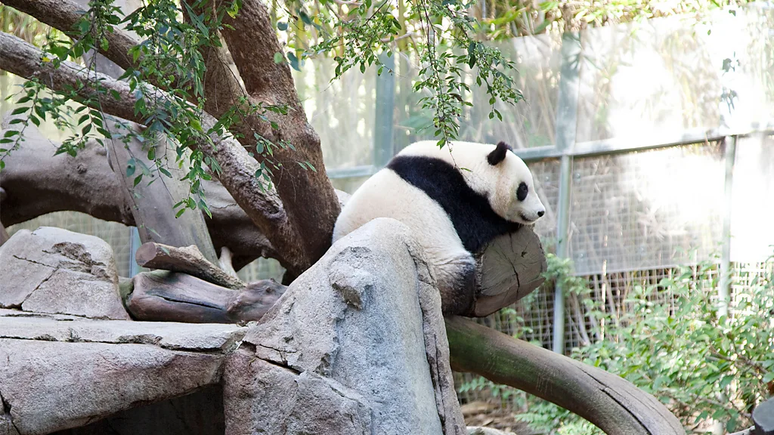A practice that dates back to the Tang Dynasty, which reigned from 618 to 907 AD, panda diplomacy – or sending pandas as diplomatic gifts – appears to be back in play in 2024.
Panda diplomacy is back in the spotlight.
At the end of May it was announced that a pair of pandas will be sent to the Washington National Zoo.
The Folha de São Paulo newspaper also reported that the Chinese government offered two pandas to Brazil, possibly for the São Paulo zoo, to celebrate the 50th anniversary of the establishment of diplomatic relations between the Brazilian government and communist China.
But, after all, what does panda diplomacy mean and why can it be so important?
Just two months after U.S. President Richard Nixon made his historic trip to China in 1972, ending more than two decades of tension between the two countries, a pair of 18-month-old pandas arrived in the United States as a gift. Sent by Prime Minister Zhou Enlai, they represented the latest use of panda diplomacy in China.
A practice that dates back to the Tang Dynasty, which reigned from 618 to 907 AD, panda diplomacy – or sending pandas as diplomatic gifts – appears to be back in play in 2024.
Last week, the China Wildlife Conservation Association announced that it had made deals to lend some of China’s adorable giant pandas to zoos in Spain and the United States, according to China’s official news agency.
“Major Chinese institutions have signed agreements with the Madrid Zoo in Spain and the San Diego Zoo in the United States for a new round of international cooperation in the protection of giant pandas,” said Mao Ning, spokesperson for the Ministry of Foreign Relations Chinese. during a news conference, according to Reuters.
The news comes after China collected three giant pandas from the National Zoo in Washington DC last year and another from the Memphis Zoo in Tennessee, moves that left just four pandas in the US (all at the Atlanta Zoo in Georgia ).
Similarly, two giant pandas that had been living in the UK since 2011 were captured in 2023, at Edinburgh Zoo.
These decisions came at a time when relations between Beijing and the West were on difficult terrain. According to an article on animal diplomacy by Barbara K. Bodine of Georgetown University, distinguished professor of diplomacy and director of the Institute for the Georgetown Diplomacy Study, China and the United States, for example, have faced some particularly demanding challenges in terms of security, humanitarian and economic. .
The renewed flurry of panda diplomacy may be part of China’s quest to “soft power” (its soft power), explains Susan Brownell, a professor in the history department at the University of Missouri and a member of the National Committee on US-China Relations, which works to promote understanding and cooperation between the two countries.
With the panda diplomats packing their bags, a new chapter of cute diplomacy could begin.

The story of panda diplomacy
Although Hsing-Hsin and Ling-Ling’s arrival in the United States in 1972 during the Nixon administration is among the best-known examples of panda diplomacy, it is certainly not the first case of its kind.
In 1941, two pandas were sent to the United States shortly before the country entered World War II: they were widely seen as a thank-you gift from China.
During the gift announcement ceremony, Chiang Kai-shek said the pandas were a way to thank “the American friends of China for alleviating the suffering of our people and healing our wounds.”
Later in the 1950s, Chairman Mao was known for sending pandas as gifts to the country’s communist allies, including North Korea and the Soviet Union.
More recently, following the disappearance of Malaysian Airlines Flight 370 in March 2014, which strained China-Malaysia relations, the arrival of two of China’s beloved pandas that same year in Malaysia was seen as a peace offering.
As for what pandas might mean today, Brownell suggests an effort by China to emulate what sets it apart from the United States on the world stage. “They know very well that their growing economic and military strength is seen as a threat, especially by the U.S. political leadership,” Brownell explained.
“They also understand that this is an important factor [da influência dos EUA] in the world comes from the allure of its cultural products, be they Hollywood films or NBA stars.”
“The use of adorable pandas, as well as state promotion of Olympic sports, is part of (China’s) effort to develop that kind of appeal and influence in the world,” Brownell added.

San Diego prepares for new pandas
Political and diplomatic implications aside, the San Diego Zoo is anxiously preparing for the arrival of a new batch of giant pandas.
The habitat that housed the last pandas, returned to China in 2019 after more than 20 years at the zoo, is being prepared and renovated for their big arrival.
“We are doubling the size of the original habitat and renovating another habitat nearby and they will connect,” said Greg Vicino, vice president of wildlife care at the San Diego Zoo.
The last time the zoo welcomed pandas from China it was as part of a successful program, both in terms of panda conservation efforts and relationships built with Chinese counterparts.
The zoo housed giant pandas from 1996 until its departure in 2019, and a total of six pandas were born during that time. Bai Yun and Shi Shi gave birth to the first surviving panda cub in captivity in the United States, and Bi Yung and Gao Gao later gave birth to five more cubs.
A substantial body of research has also been published and a genuine connection has been established between San Diego environmentalists and China.
“There was a constant flow [entre San Diego e a China] of researchers, scientists and doctoral students who come and go here,” said Vicino. “This collaboration – if you look at the list of publications that came out of it – is impressive. It was a huge victory for conservation.”
And ultimately, Vicino says, conservation comes down to relationships. “I can tell you from experience, having worked in this field for over 20 years, that I naively thought conservation was about saving habitats and species. But I quickly discovered it was about building relationships.”
He jokes that diplomacy is something he’ll “leave to the professionals” and adds: “It’s really about one-on-one contact between real environmentalists from different countries.”
While it’s still unclear when exactly the new pandas will arrive in San Diego, some say the zoo may welcome descendants of its previous residents, Bi Yung and Gao Gao.
If so, Vicino says it would be an appropriate way for San Diego to continue its conservation efforts for this species.
“It would be really great for us to be able to come full circle with this legacy,” Vicino said.
Source: Terra
Rose James is a Gossipify movie and series reviewer known for her in-depth analysis and unique perspective on the latest releases. With a background in film studies, she provides engaging and informative reviews, and keeps readers up to date with industry trends and emerging talents.



![More beautiful life in advance: What awaits you on Wednesday, September 17, September 17, 2025, in 422 episodes [SPOILERS] More beautiful life in advance: What awaits you on Wednesday, September 17, September 17, 2025, in 422 episodes [SPOILERS]](https://fr.web.img3.acsta.net/img/1e/91/1e917550abb594baaf0f98cec377cc7d.jpg)


